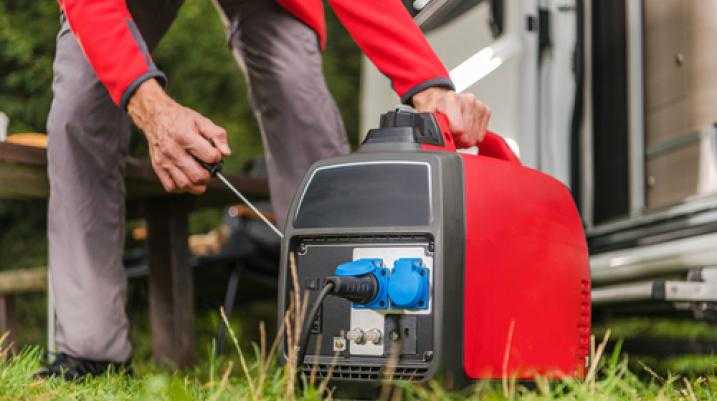Generator Shut-Off Switches Fail to Meet Federal Regulatory Standards to Eliminate Deaths

The failure of a 6,250-watt Briggs & Stratton Storm Responder shut-off switch led to the preventable death of a Louisiana family of three during Hurricane Ida, along with the unfortunate deaths of three other Louisiana residents.
In September 2021, Demetrice Johnson and her two children faced tragedy when their portable generator failed to switch off after carbon monoxide levels in the home rose to an unsafe level. This failure led to carbon monoxide poisoning after exhaust fumes seeped from the generator and flooded their home.
The family’s generator was designed with an automatic shut-off switch in case carbon monoxide levels become too high. But as was sadly discovered in the morning, the switch was still turned on, suggesting the automatic switch had not been triggered, hence causing the unfortunate death of Johnson and her two children.
Here we take a deeper look into what is the shut-off switch defect, why the shut-off switch is so important, what methods are available to monitor carbon monoxide, and shut-off switch defect statistics.
What Is the Shut-Off Switch Defect?
The Briggs & Stratton Storm Responder shut-off switch defect is where unsafe levels of carbon monoxide are not being sensed by the product’s sensor, a flaw when manufacturing and testing the product’s safety. Incidents of this have particularly occurred where the portable generator’s exhaust has faced towards property instead of away. This stops the sensor from gauging the level of carbon monoxide going from the back door and into the property.
Why Is the Auto Shut-Off Switch So Important?
Portable generators are on the market to provide consumers with the ability to power their home’s electronics during periods of power shortages, often caused by extreme weather. The design of the automatic shut-off switch is supposed to prevent carbon monoxide poisoning due to the fumes the generator admits when in use.
The shut-off switch monitors the levels of carbon monoxide being emitted, and should the level become too high, automatically turn off.
How Can You Monitor Carbon Monoxide?
Carbon monoxide is an odorless, tasteless, and colorless gas which is poisonous. Its features make detection almost impossible without the correct provisions in place. You can, however, monitor the level of carbon monoxide through a carbon monoxide detector, which will sound an alert if it measures unsafe levels in your home.
Shut-Off Switch Defect Statistics
Similar cases of carbon monoxide poisoning from portable generators have been reported across the United States and are reported to be one of the deadliest consumer products available to purchase.
On average, portable generators poison thousands of Americans each year and kill around 80 people. Statistics reveal that there have been more than 900 deaths and 15,400 emergency room treatments for carbon monoxide poisoning due to generator shut-off switch defects in the years between 2005 and 2017. This figure is expected to have risen in the last five years.
This sheer amount of poisonings and deaths caused by portable generators has led to multiple attempts for safety upgrades to be undertaken on the responsible products, many of which have been overlooked, only resulting in limited and unsatisfactory upgrades.
The portable generator’s automatic shut-off triggers are supposed to prevent more than 99% of deaths, according to The Portable Generator Manufacturers Association, but more cases of fatalities and poisoning are on the rise across the United States.
An investigation into the number of incidents revealed the actual figure prevents around 87% of deaths but could be increased to nearly 100% with a combination of shut-off sensors and engines that release less carbon monoxide.
Contact an Attorney for Help
Should you or a loved one be impacted by a faulty portable generator, leading to deadly carbon monoxide poisoning or causing fatality it can significantly disrupt every aspect of your life. Carbon monoxide poisoning recovery is a long process and can lead to permanent brain damage in some instances.
Product manufacturers hold a responsibility to put effective safety precautions in place when developing products for consumer use, and where they fail to do this, resulting in carbon monoxide poisoning or death, you could be entitled to make a product defect claim.
When you choose to work alongside the product defect attorneys at Morgan & Morgan, you can rest assured that your case is being efficiently handled by skilled specialists.
With our support, the team carefully listens to your personal circumstances and the effect this tragedy has imposed on you and your loved ones. Our free case evaluation can provide the information and practical support you need, including whether you are eligible to claim compensation for your suffering. Should you be eligible, our expert attorneys will navigate you through the process, always making sure to provide the utmost support throughout.
To find out more about how the specialist team of attorneys at Morgan & Morgan can help you with the claims process, please don’t hesitate to contact us today or fill out our free case-evaluation form to determine whether you are eligible to receive compensation.
Injured? Getting the compensation you deserve starts here.

Injured?
Not sure what to do next?
We'll guide you through everything you need to know.